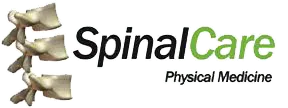By John Dettmer, D.C.
Back pain is one of the most common complaints seen by doctors in medical offices. Every day, millions of people are in continuous pain often unable to do the things they enjoy most. On any given day, nearly two percent of the entire United States workforce is disabled by back pain. The search for relief has led many to try a new technology called spinal decompression.
This popular application involves the reversal of gravitational force on the spine to increase the space between the spinal bones (vertebrae) and relieve pressure on the discs. Back pain that involves compression of the spinal discs may benefit significantly from decompression.
Back pain is the result of a structural problem and there are two types: acute back pain which is a brief episode that comes on suddenly and is usually due to mechanical causes such as a strain or sprain. The second is chronic, persistent back pain. This persists beyond four to six weeks and is often related to the spinal joints, discs or supporting muscles of the back.
Our spines are made up of several bones called vertebrae. There is a fibrous structure between each vertebra which has a soft inner core and is called a disc. There is a soft inner structure called the nucleus pulposus and the outer portion of the disc is called the annulus fibrosis. This structure creates space between the vertebrae so the delicate spinal nerves can pass through the openings (called foramen) to reach their targeted destination. It also provides flexibility and cushioning to the spine.
A cycle of pain begins if the discs become damaged in any way. The most common cause of back pain is some kind of issue with a disc in the lower back. It may be a result of lifting something, a sports injury or it can be as simple as someone coughing causing an internal pressure causing the disc to bulge or become herniated.
Often, it’s just a function of growing older. The discs that are used the most, primarily down in the lower back, start to lose their hydration. As a result, a degenerative disc process starts and some bulging and herniating effects occur.
Other causes can include poor posture, standing or sitting in the same place for a long time, being significantly overweight, osteoporosis, osteoarthritis, fibromyalgia, trauma from an injury due to an accident or fall or a serious illness such as cancer or an infection.
Even though discs are very sturdy and resilient; they are vulnerable to injury with repetitive activity and loading. Small cracks and fissures may occur over time creating a pathway for the softer inner nucleus to slowly leak out. This is the beginning of a disc bulge or herniation.
Spinal Decompression works on the affected spinal segment by significantly reducing intradiscal pressure and creating a vacuum affect on the herniated tissue. This natural vacuum retracts the extruded disc material, takes the pressure off the pinched nerve and reduces inflammation.
Additionally, the vacuum effect often increases the spacing between the vertebra as the involved discs are rehydrated allowing even more room for the nerve. As the disc rehydrates its shock absorbing capabilities are restored reducing mechanical stress on the related structures slowing or halting the osteo-arthritic damage.
If you have been suffering with disc problems—or if you doctor has told you to think about spinal surgery, you need to sit down and talk to me first.
No one should be afraid to try spinal decompression. It does not hurt, is safe and effective, and causes no further problems. This is the best non-surgical and conservative procedure for patients suffering with bulging or herniated discs, degenerative disc disease, posterior facet syndrome, sciatica, failed back surgery syndrome and non-specified mechanical low back or neck pain resulting in spinal stenosis.
To find out whether or not you might benefit from Spinal Decompression Therapy, simply call us at 317-272-4100, to schedule a free, no-obligation consultation with our team. We will sit down with you, go over your history and tests and explain what they all mean. After examining you, we’ll make some suggestions specific to you. Not everyone is a good candidate for spinal decompression therapy. But if you have been suffering you owe it to yourself to find out if you qualify.
You can also find more information about back pain relief on our homepage or by ordering a free copy of Your Guide to Back Pain Relief.
John Dettmer, D.C. – With over 34 years of experience, Dr. Dettmer is trained in spinal and cranial therapeutic procedures, non-surgical spinal decompression, neuropathy treatment, well-being and weight loss. He completed his undergraduate training at Indiana University in 1974 and received his doctorate in chiropractic from Palmer College in 1977. He specializes in combining the best of physical therapy, chiropractic and other physical medicine procedures to help his patients get out of pain fast and effectively. His favorite part of practice is watching the changes that occur in his patients overall health after starting therapeutic treatment. Dr. Dettmer is a member of the Palmer Alumni Association, Indiana State Chiropractic Association, Neuropathy Treatment Centers of America and the Neurological Relief Centers.
